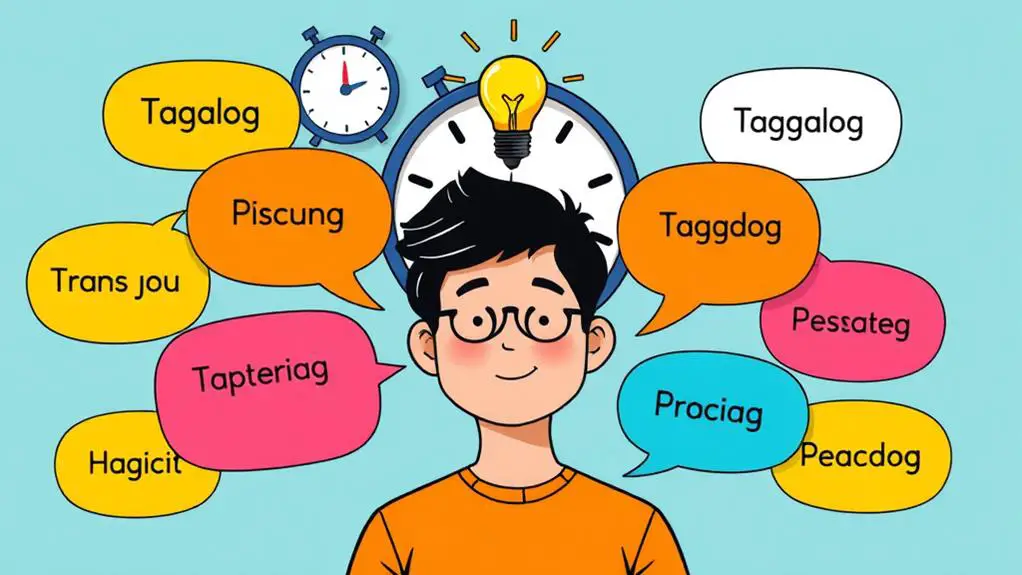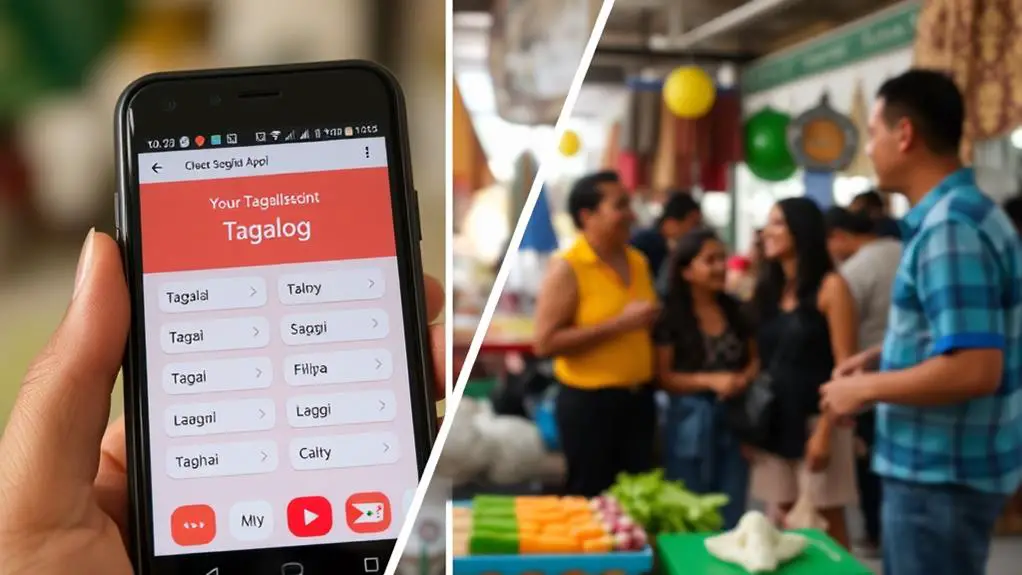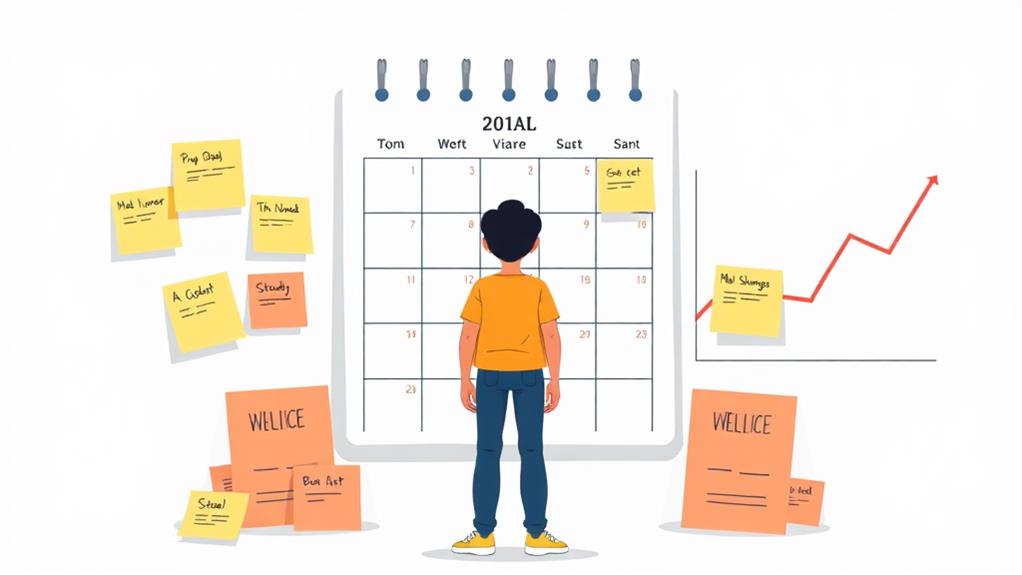Learning Tagalog quickly for everyday use unlocks a world of possibilities, allowing you to connect with millions of native speakers, enrich your travel experiences, and foster deeper cultural understanding.
To accelerate your learning journey, focus on speaking and practical usage from day one. Set measurable goals, such as learning basic phrases like "Salamat" (thank you) and "Oo" (yes), and engage with Tagalog media, like watching Filipino movies with English subtitles.
Mastering basic phrases is key to building confidence. Learn common phrases like "Kumusta?" (how are you?) and "Mabuti" (good), which will help you navigate everyday situations. Understanding the grammar structure, such as the use of verb prefixes to indicate tense, will also enhance your communication skills.
Immerse yourself in Tagalog culture by listening to Filipino music, trying traditional dishes like adobo and sinigang, and participating in cultural events. This will help you develop a deeper appreciation for Filipino heritage and foster meaningful relationships with native speakers.
By following these steps, you'll be well on your way to fluency and make the most of your learning experience. Take the first step towards fluency today!
Effective Strategies for Quick Learning

Effective Strategies for Quick Learning
Focus on Practical Usage
To accelerate your Tagalog learning journey, focus on speaking and practical usage from day one. This approach accelerates language acquisition and builds confidence in everyday conversations. For instance, practice ordering food in Tagalog at a local restaurant or engaging in basic conversations with native speakers.
Utilize Spaced Repetition
Employ spaced repetition techniques to improve vocabulary retention, allowing you to remember and use essential phrases quickly. This involves reviewing words and phrases at increasingly longer intervals to reinforce long-term memory. For example, review a list of common phrases on day one, then again on day seven, and finally on day 14.
Immerse Yourself in Tagalog Media
Engage with Tagalog media, such as films and music, for immersive learning experiences that enhance contextual understanding and listening skills. Watch Tagalog movies with English subtitles or listen to Tagalog music with lyrics to improve your comprehension.
Set Measurable Goals
Set specific, measurable goals for daily practice, such as learning a certain number of phrases or engaging in conversations, to maintain motivation and track progress. For example, aim to learn five new phrases daily or engage in a 10-minute conversation with a native speaker.
Practice with Native Speakers
Make the most of language exchange platforms to regularly practice with native speakers, which can significantly boost your fluency and comfort in using Tagalog in real-life situations. Schedule regular language exchange sessions to practice conversing with native speakers.
Building Blocks of Tagalog Language
Mastering Tagalog: Understanding the Building Blocks
The Tagalog language has a distinct grammatical structure that differs from English. Tagalog follows a Verb-Subject-Object (VSO) order, which may require adjustment but is crucial for effective communication.
One advantage of the Tagalog language is its phonetic spelling system, which makes pronunciation easy. Words are pronounced as they're written, making it simpler to learn and remember new vocabulary.
Tagalog vocabulary has been influenced by other languages, including Spanish and English. Many loanwords have been incorporated into the language, making it easier to recognize and learn new terms.
Basic conversational phrases are vital for everyday interactions. "Salamat" means "thank you", and "Magandang umaga" means "good morning". These phrases are essential for building relationships and communicating effectively.
The Filipino alphabet is similar to the English alphabet, with one additional letter: "ñ". This similarity makes it easier for English speakers to learn and recognize Tagalog words.
Unlocking Cultural Understanding and Appreciation

Language and Culture are Intertwined
When learning Tagalog, it becomes clear that language and culture are deeply connected. Every phrase and expression offers a glimpse into the rich heritage of the Filipino people.
Deeper Understanding and Appreciation
By learning Tagalog, you'll gain a deeper understanding and appreciation of the culture of the Philippines. You'll be able to engage with native Tagalog speakers in daily interactions, fostering deeper connections and heartwarming exchanges.
Showing Respect for Filipino Heritage
Understanding common Tagalog expressions reflects respect for Filipino heritage, making it easier to bond with the large overseas Filipino population and engage in shared cultural experiences.
Enhancing Appreciation of Local Festivals
Speaking Tagalog will enhance your appreciation of local festivals and events, where cultural expressions like music, dance, and cuisine are intertwined with the language.
Enriched Travel Experiences
Rapid acquisition of Tagalog can lead to enriched travel experiences, allowing for more authentic interactions and insights into the warmth and resilience of Filipino communities.
Appreciation for the Filipino Way of Life
As you learn Tagalog, you'll gain a deeper appreciation for the Filipino way of life and create meaningful relationships with the people you meet.
Overcoming Common Learning Challenges
Overcoming Common Learning Challenges in Tagalog
While learning Tagalog, you may encounter several challenges that can hinder your progress. However, with the right strategies, you can overcome these obstacles and continue to improve your skills.
Unfamiliar Grammatical Structures
Tagalog has unique grammatical structures, such as the VSO (Verb-Subject-Object) word order, which can be difficult for English speakers to grasp. Focusing on practical usage from day one can help overcome these barriers.
Pronunciation Variations
Tagalog pronunciation can be challenging, particularly with sounds like the rolling 'r' and the 'ng' combination, which may lead to misunderstandings. Consistent practice with native speakers can enhance clarity and confidence.
Limited Resources
Compared to more widely studied languages, Tagalog may have limited resources, which can hinder progress. Utilizing diverse learning materials and apps like the Ling App can provide a more rounded approach to mastering Tagalog.
Maintaining Motivation
Learning Tagalog can be complex, which may lead to waning motivation. Setting specific, measurable goals and celebrating small successes can help maintain enthusiasm and commitment.
Limited Immersion Opportunities
Limited opportunities for immersive experiences can slow down learning. Engaging in activities like watching Tagalog films or participating in language exchange programs can significantly accelerate learning and help navigate the intricacies of everyday conversations.
Maximizing Language Learning Apps

Effective language learning requires a combination of dedication, the right resources, and a well-structured approach. To learn Tagalog fast, language learning apps like the Ling App provide comprehensive courses tailored for beginners.
With consistent practice of at least 10 minutes daily, you can significantly enhance your vocabulary retention and conversational fluency in a shorter time frame.
Gamified elements make learning Tagalog more enjoyable and effective. These apps incorporate features like speech recognition technology, which helps you improve your pronunciation skills by providing real-time feedback.
Additionally, utilizing various resources, such as flashcards and spaced repetition techniques, can support memory recall and accelerate the acquisition of essential Tagalog phrases for daily interactions.
By leveraging these features, you can efficiently learn conversational phrases and cultural aspects, allowing you to communicate confidently in Tagalog.
This approach enables you to focus on developing a strong foundation in the language, leading to faster progress and improved fluency.
Immersing in Tagalog Through Media
Immersing in Tagalog Through Media
Language learning apps provide a solid foundation, but immersing yourself in Tagalog through media is crucial to gaining a deeper understanding of the language and its cultural nuances. By engaging with Tagalog media, you'll experience the language in context, enhancing retention and understanding.
Watching Tagalog Movies
Watching Tagalog movies with English subtitles helps associate spoken words with their meanings, enhancing your vocabulary and listening skills. This approach allows you to see how words are used in context, making it easier to remember them.
Listening to Tagalog Music
Listening to Tagalog songs helps you pick up common phrases and expressions while enjoying the rhythm and emotional context of the language. You'll get to hear how words are pronounced and used in different situations.
Consuming Tagalog Podcasts and Radio Shows
Tagalog podcasts and radio shows immerse you in natural conversational patterns, improving your comprehension and pronunciation. You'll get to hear how people talk in everyday conversations.
Following Tagalog YouTube Channels
Following Tagalog YouTube channels focused on language learning or cultural content offers diverse perspectives and practical usage examples. You'll get to see how the language is used in different contexts and situations.
Tuning in to Tagalog TV Shows and News Broadcasts
Tuning in to Tagalog TV shows and news broadcasts helps you get accustomed to the natural flow and pace of the language. You'll get to hear how the language is used in different situations and contexts.
Setting Realistic Goals and Progress Tracking

Setting Realistic Goals
To learn Tagalog efficiently, set specific, measurable goals. For example, aim to learn 10 new vocabulary words per week. This will structure your learning process and enhance motivation.
Tracking Progress
Track your progress through daily practice sessions of at least 10 minutes. This will lead to significant improvements in conversational skills within a few months.
Utilize tools like language apps or flashcards to monitor your retention rates and adjust your study habits accordingly.
Assessing Fluency
Regularly assess your fluency through conversations with native speakers or tutors to identify areas needing improvement and maintain motivation.
This will help you identify areas needing improvement and stay motivated.
Establishing a Routine
Establish a routine that incorporates both speaking and listening exercises to ensure balanced progress and reinforce language retention over time.
This will help you speak Tagalog fluently and effectively communicate with people who speak the language.
Are Online Courses the Best Way to Quickly Learn Tagalog for Everyday Use?
Online courses for learning tagalog basics offer a practical and structured approach to mastering the language. With interactive lessons and flexible schedules, they enable learners to pick up essential vocabulary and phrases quickly. Tailored for daily conversations, these courses are perfect for anyone aiming to communicate effectively in Tagalog for everyday use.
Enhancing Fluency Through Practice
Practice Consistently to Enhance Fluency
Incorporating consistent practice into your daily routine is crucial to accelerate your Tagalog learning journey. Even 10 minutes a day using apps like Ling App can significantly enhance vocabulary retention and fluency.
To take your learning to the next level, try the following strategies:
Engage in Real-Life Conversations
Engaging in real-life conversations with native speakers is an effective way to accelerate fluency and apply phrases and grammar in context. This can be done through language exchange programs, conversation practice apps, or by speaking with native Tagalog speakers.
Utilize Spaced Repetition Techniques
Spaced repetition techniques, such as Glossika's sentence repetition method, can reinforce memory and improve pronunciation over time. This technique involves reviewing phrases and sentences at increasingly longer intervals to help solidify them in your long-term memory.
Set Specific, Measurable Goals
Setting specific, measurable goals, such as learning a certain number of new phrases each week, can help keep motivation high and track progress effectively. This approach enables you to focus on achievable objectives and monitor your progress.
Experience Immersive Experiences
Experiencing immersive experiences, such as watching Tagalog films or listening to music, can provide contextual learning opportunities that enhance conversational skills and cultural understanding. These experiences can help you learn new phrases, idioms, and expressions in context.
Make Daily Practice a Habit
Making consistent daily practice a habit, even if it's just for a few minutes, can lead to significant improvements in your Tagalog skills over time. Consistency is key to developing fluency, so try to set aside a specific time each day to practice.
Frequently Asked Questions
What Are the Benefits of Knowing Tagalog?
Knowing Tagalog Enhances Cultural Appreciation
Knowing Tagalog allows you to connect with the Filipino community on a deeper level. You'll gain a better understanding of the culture, enabling you to appreciate its customs, traditions, and values more meaningfully.
Improved Communication for Travel and Social Interactions
Speaking Tagalog enhances travel experiences by allowing you to communicate effectively with locals. You'll be able to ask for directions, order food, and engage in conversations, making your travels more enjoyable and interactive.
Job Opportunities and Personal Growth
Knowing Tagalog can open up job opportunities in fields such as international business, education, and healthcare. It also fosters personal growth by broadening your perspective and enabling you to connect with people from diverse backgrounds.
Cognitive Benefits
Speaking Tagalog improves memory and problem-solving skills. Learning a new language strengthens the brain, leading to improved cognitive abilities and a lower risk of age-related cognitive decline.
Enhanced Language Retention
Knowing Tagalog also improves language retention, making it easier to learn other languages in the future. This is because learning one language helps develop skills that can be applied to learning others.
How Long Does It Take to Learn Tagalog?
3-4 years is the estimated time to reach conversational fluency in Tagalog with consistent daily practice of 60 minutes. However, with dedication and motivation, it's possible to achieve a functional level of communication in 6-12 months.
To achieve this, focus on effective learning methods such as:
- Language immersion: Listen to Tagalog music, watch Filipino movies, and speak with native speakers to get accustomed to the language.
- Vocabulary acquisition: Learn common phrases, words, and their meanings to build a strong foundation in Tagalog.
- Mastering grammar rules and pronunciation tips: Understand the language's structure and pronunciation to communicate effectively.
- Cultural nuances: Study the cultural context of Tagalog to avoid misunderstandings and communicate appropriately.
- Practical phrases: Learn common expressions and phrases used in everyday conversations.
- Online resources: Utilize online materials, such as language learning apps and websites, to supplement your learning.
Why Is Learning Tagalog Important?
Building Cultural Connections
Learning Tagalog is essential for building cultural connections. When traveling to the Philippines, speaking Tagalog enables you to communicate effectively with locals, enhancing your travel experiences.
For instance, you can ask for directions, negotiate prices, and understand cultural nuances, making your trip more enjoyable and immersive.
Improving Communication Skills
Tagalog proficiency improves your communication skills, leading to better social interactions and deeper relationships.
By speaking Tagalog, you can engage with the local community more effectively, fostering a sense of belonging. For example, you can participate in cultural events, understand local customs, and appreciate the history behind them.
Preserving Heritage and Personal Growth
Speaking Tagalog preserves your heritage and contributes to personal growth.
You can connect with your roots, appreciate the language's beauty, and develop a deeper understanding of your cultural identity. This, in turn, enhances your self-awareness and confidence.
Unlocking Business Opportunities
Knowing Tagalog unlocks business opportunities in the Philippines.
You can communicate with clients, understand local market trends, and navigate business protocols, giving you a competitive edge. This enables you to build strong business relationships and capitalize on opportunities in the region.
Why Is the Filipino Language Important in Our Daily Life?
The Filipino language plays a vital role in daily life because it strengthens cultural connections and facilitates smoother interactions.
In the workplace, it enhances communication by allowing colleagues to understand each other better, leading to increased productivity and teamwork. For instance, when coworkers discuss project details in Filipino, they can convey their ideas more effectively, resulting in better project outcomes.
In the community, it fosters engagement and strengthens family ties by enabling individuals to participate in local events and connect with their family members on a deeper level. For example, when grandparents share stories about Filipino traditions with their grandchildren, they can pass on their cultural heritage and create lasting bonds.
When traveling, it enriches experiences by allowing individuals to appreciate the local culture more fully. For instance, when visiting historical sites in the Philippines, understanding Filipino enables tourists to read signs and understand the context of the landmarks, making their trip more meaningful.
Historically, it's a vital part of heritage because it preserves the country's rich cultural identity.
Mastering Tagalog, the basis of the Filipino language, allows individuals to appreciate the country's history and traditions, sparking personal growth and a deeper connection with the Filipino people.